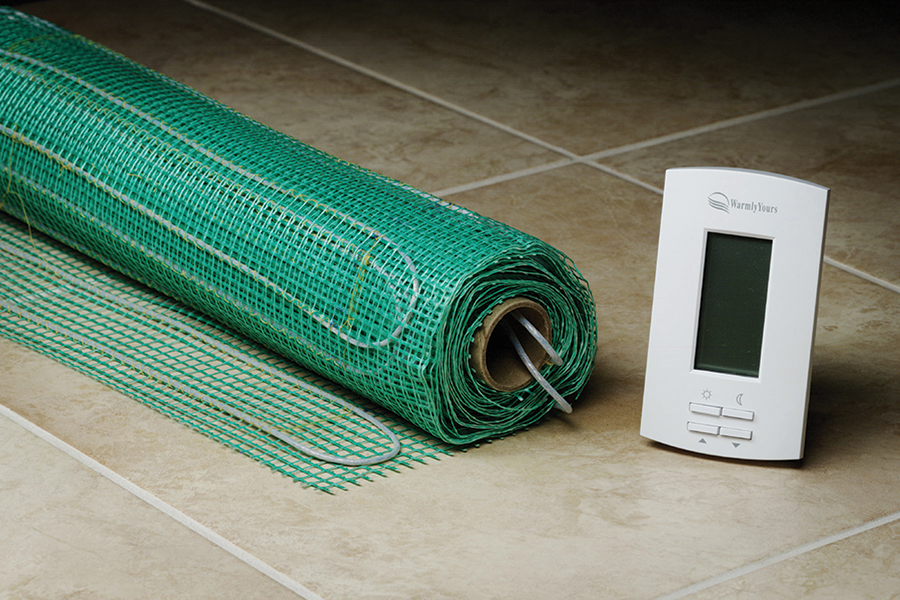When it makes sense to heat your feet

I often feel chilly in my home, especially during the winter months. I know electric resistance heating can be expensive to use, but I really like the idea of in-floor heating. Does it only work with tile flooring, or can it be used under carpet? What types are available?—Ron A.
With a forced-air furnace, the warmest air naturally collects upward near the ceiling, too far from where you’re active in your home. In-floor heating reduces the extent of cool layers in a room. Instead of heating room air, a warm floor radiates heat upward to your body. And when your feet are warm, your entire body feels warm.
With improved comfort from in-floor heating, you may be able to lower the thermostat setting of your whole-house heating system considerably and yet not feel chilly. Although you’ll spend money operating the in-floor system, you may save money altogether because your regular heating system may cycle on less often.
While in-floor heating is most commonly installed in a concrete or tile floor in a bathroom or in a basement, other types are specifically designed to be used under carpeting, hardwood floors, or laminate flooring.
With in-floor heating, you do not have to use it throughout your entire house (or even an entire room). You can create small warm zones in front of a mirror in a dressing room, or in a favorite work area or gathering space.
Creating warm zones in any room
Heating systems beneath concrete or ceramic tile floors use thick cables laid in a serpentine pattern, and are typically installed during construction or a major renovation. Systems designed for other finish flooring materials typically use thin mats or fiberglass mesh embedded with thin wires. These are placed on the subflooring under the finish flooring materials. Some systems for smaller areas are designed for do-it-yourself installation. At a home center store, a 10-foot by 30-inch heating mat costs about $200, and a matching programmable thermostat is about $140.
In-floor heating manufacturers offer charts and other tools to help you calculate how much to use in your room to achieve the comfort you want. Before installing any in-floor heating system, be sure to check with the finish flooring manufacturer about the recommended maximum temperature for its products to avoid excessive drying of wood or damage to carpet fibers or synthetic materials in laminates.
WINTERIZE PIPES
Prevent a plumbing disaster
Many in-floor heating manufacturers also offer options for your plumbing. If you set your furnace thermostat low to save energy when you’re away from home for extended periods of time during winter, a water pipe could freeze during a severe cold snap. Self-regulating electric heating cables attached to water pipes can help prevent a frozen disaster.
James Dulley for the January 2015 issue

